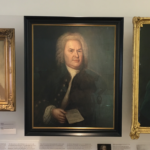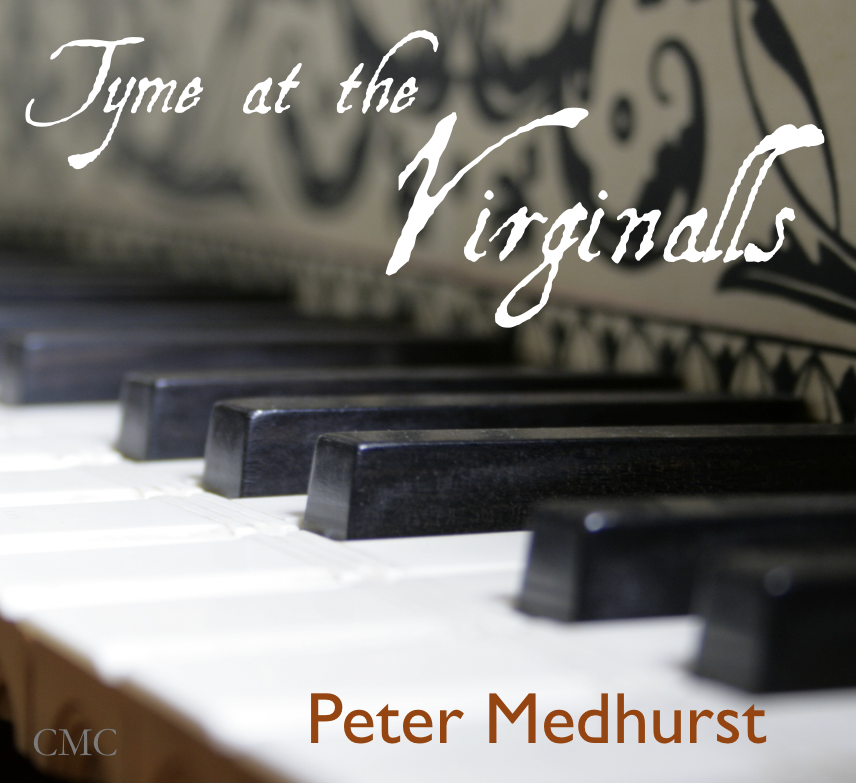Handel & His Satellites
18th century English harpsichord music

A recording marking 250 years since the death of Handel
Peter Medhurst performs a programme of 18th century English keyboard music on a double manual French harpsichord built by Dennis Woolley in 1983, after an instrument by Pascal Taskin, dated 1769.
GF Handel – Air & Variations from Suite in Bb 1733 from Handel and His Satellites
_________________________
Programme
Sonata No 3 in G (1756) – TA Arne
Presto from Sonata No 6 in G (1756) – Arne
Air and Variations from Suite No 1 in Bb (1733) – GF Handel
Suite No 1 in G minor (1734) – T Chilcot
Lesson No 2 in D (1750) – M Greene
Bourée ‘Impertinence’ – Handel
Voluntary on a Flight of Angels – Handel
Voluntary in D minor (1758) – J Stanley
Lesson in Bb Op 3 No 2 (1750) – W Felton
Passacaille from Suite No 7 in G minor (1720) – Handel
_________________________
 CD runs for 1 hour
CD runs for 1 hour
For orders: click Contact tab on this website, fill in the required boxes and quote reference CMC 275609.
Price: £10 plus £2 p&p
Released: April 2009
Further samples from the CD:
Thomas Arne – Allegro from Sonata No 3 in G from Handel and his Satellites
Maurice Greene – Andante from Lesson No 1 in D 1750 from Handel and His Satellites
Thomas Chilcot – Jigg from Suite in G minor 1734 from Handel and His Satellites
_________________________
The old schoolboy joke that Handel used to practice on an old spinster in the attic is an irreverent reminder that Handel grew to become a first-rate organist and harpsichordist, whose performances held his contemporaries in thrall. It is often said that the audiences who attended the premieres of his early oratorios in the 1730s, did so more to hear Handel perform his organ concertos during As one might expect from so fine a virtuoso, Handel’s harpsichord music is of a high calibre too, even though it may lack the immediacy and flamboyancy of his famous improvisations. His principal published collections comprise two volumes of Suite de Pieces dating from 1720 and 1733, and examples from each may be heard here (tracks 5 & 26). By way of contrast to these two brilliant theme-and-variation movements, is a pair of slighter works, Impertinence (track 16) – a dance movement, possibly a transcription from an opera; and A Voluntary on a Flight of Angels (track 17) – originally designed for one of Charles Clay’s musical clocks. It is often said that imitation is the greatest form of flattery, and if this is so, then many English composers at the time paid ‘tribute’ to Handel by modelling their music on his distinctive style. The outer movements of William Felton’s Lesson No 2 from Eight Suits [sic] of Easy Lessons (anything, but easy) is a further outpouring from a staunch Handelian. Although the music displays remarkable spark, and quirkiness – especially in its melodies – one could argue that when the invention is at its most arresting (tracks 23 & 25), the eye of Handel peers distinctly over Felton’s shoulder.Read Program notes...
Programme notes
 During the course of the 18th century, England played host to a wide variety of foreign composers who had crossed the Channel in order to seek their fortune in London. Although many of the rank and file visitors eked out entire careers in the capitol, the highfliers – Bononcini, Galuppi, Gluck, Haydn and Mozart – stayed but a short time, and with purses lined, returned to the Continent to enjoy success elsewhere. However, with George Frederic Handel, things were different. Having arrived in London as a young man of 25, he saw its musical potential and settled there permanently. In fact, he settled so comfortably into the musical milieu of his adopted country, that the story of Handel’s compositions and their performances is essentially the larger part of the story of 18th century English music itself.
During the course of the 18th century, England played host to a wide variety of foreign composers who had crossed the Channel in order to seek their fortune in London. Although many of the rank and file visitors eked out entire careers in the capitol, the highfliers – Bononcini, Galuppi, Gluck, Haydn and Mozart – stayed but a short time, and with purses lined, returned to the Continent to enjoy success elsewhere. However, with George Frederic Handel, things were different. Having arrived in London as a young man of 25, he saw its musical potential and settled there permanently. In fact, he settled so comfortably into the musical milieu of his adopted country, that the story of Handel’s compositions and their performances is essentially the larger part of the story of 18th century English music itself. intervals, than to hear the vocal work in question. Two decades earlier, Handel’s impromptu display on a spinet so impressed the 10 year old Mary Granville that when her uncle, Sir John Stanley, enquired of her whether she thought she should ever play as well as Mr Handel, she replied, If I did not think I should, I would burn my instrument! Earlier still, at a masquerade in Venice in 1710, Domenico Scarlatti remarked upon hearing some harpsichord music being performed that it could be no one but the famous Saxon, or the Devil!
intervals, than to hear the vocal work in question. Two decades earlier, Handel’s impromptu display on a spinet so impressed the 10 year old Mary Granville that when her uncle, Sir John Stanley, enquired of her whether she thought she should ever play as well as Mr Handel, she replied, If I did not think I should, I would burn my instrument! Earlier still, at a masquerade in Venice in 1710, Domenico Scarlatti remarked upon hearing some harpsichord music being performed that it could be no one but the famous Saxon, or the Devil!
 Stanley’s Voluntary in D minor (tracks 18 & 20), for example, breathe the unmistakeable air of Handel’s organ concertos, while the slow movement (track 19) recalls the gentle cantilenas that Handel might have crafted for his singers in the opera house. In similar vein, Thomas Chilcot’s Suite in G minor (tracks 6-12) draws obvious strength from the penultimate harpsichord suite in Handel’s 1720 collection. In fact, certain figurations in Chilcot’s Overture (track 6) and Jigg (track 11) are so closely allied to Handel’s suite that they sound like direct quotations.
Stanley’s Voluntary in D minor (tracks 18 & 20), for example, breathe the unmistakeable air of Handel’s organ concertos, while the slow movement (track 19) recalls the gentle cantilenas that Handel might have crafted for his singers in the opera house. In similar vein, Thomas Chilcot’s Suite in G minor (tracks 6-12) draws obvious strength from the penultimate harpsichord suite in Handel’s 1720 collection. In fact, certain figurations in Chilcot’s Overture (track 6) and Jigg (track 11) are so closely allied to Handel’s suite that they sound like direct quotations. The works of Thomas Arne and Maurice Greene, on the other hand, display greater thematic and textural independency, with a firmer reliance – particularly in case of Arne – on English melodic shapes. One wonders if this may be accounted for, in part, by the fact that neither composer was said to be on speaking terms with Handel in later years. Even so, the Allegro (track 2) from Arne’s Suite No 3 in G owes much to the virility and drive of Handel’s fast movements, while the twists and turns of the Prelude (track 1), may recall Arne’s youthful experience – and that of Michael Festing’s – of hearing Handel perform at Oxford in 1733 . . neither themselves nor anyone else of their acquaintance, had ever heard such extempore, or such premeditated playing, on that or any other instrument (Dr Burney).
The works of Thomas Arne and Maurice Greene, on the other hand, display greater thematic and textural independency, with a firmer reliance – particularly in case of Arne – on English melodic shapes. One wonders if this may be accounted for, in part, by the fact that neither composer was said to be on speaking terms with Handel in later years. Even so, the Allegro (track 2) from Arne’s Suite No 3 in G owes much to the virility and drive of Handel’s fast movements, while the twists and turns of the Prelude (track 1), may recall Arne’s youthful experience – and that of Michael Festing’s – of hearing Handel perform at Oxford in 1733 . . neither themselves nor anyone else of their acquaintance, had ever heard such extempore, or such premeditated playing, on that or any other instrument (Dr Burney).
© Peter Medhurst, February 2009




![The Scotish [sic] Gigg](https://petermedhurst.com/wp-content/uploads/2012/08/Peter120813untitled-shoot-2.jpg)